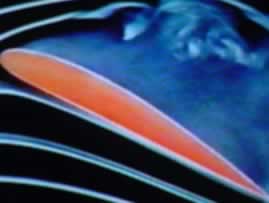

This cookie is set by GDPR Cookie Consent plugin. The cookie is set by GDPR cookie consent to record the user consent for the cookies in the category "Functional". The cookie is used to store the user consent for the cookies in the category "Analytics". These cookies ensure basic functionalities and security features of the website, anonymously.

Credit: Harvard SEAS "Our ability to predict the weather, understand why a Boeing 747 flies even with turbulent currents in its wake, and determine the global flows in the ocean depends on how well we model turbulence," said Shmuel Rubinstein, Associate Professor of Applied Physics at SEAS and corresponding author of the paper.Necessary cookies are absolutely essential for the website to function properly. Each vortex was dyed a different color, so researchers could observe how they interact. Vortex cannons fire in a 75-gallon aquarium to produce the vortices. The research is described in Science Advances. Coupled with the analysis of numerical simulations performed by collaborators at the University of Houston and ENS de Lyon, the researchers have gained unprecedented insight into how fluidic systems transform from order to disorder. Paulson School of Engineering and Applied Sciences (SEAS) may have identified a fundamental mechanism by which turbulence develops by smashing vortex rings head-on into each other, recording the results with ultra-high-resolution cameras, and reconstructing the collision dynamics using a 3-D visualization program. Want to unravel the underlying mechanics of turbulence? Smash vortices together. Want to understand the fundamental building blocks of the universe? Smash particles together.

When they don't understand something, physicists have a go-to solution: smash it together. But the mechanics of that descent into chaos have puzzled scientists for centuries. Credit: Ryan McKeown/Harvard SEAS Turbulence occurs when an ordered fluid flow breaks into small vortices, which interact with each other and break into even smaller vortices, which interact with each other and so-on, becoming the chaotic maelstrom of disorder that makes white water rafting so much fun. A 3D reconstruction of the collision dynamics of two vortices.


 0 kommentar(er)
0 kommentar(er)
